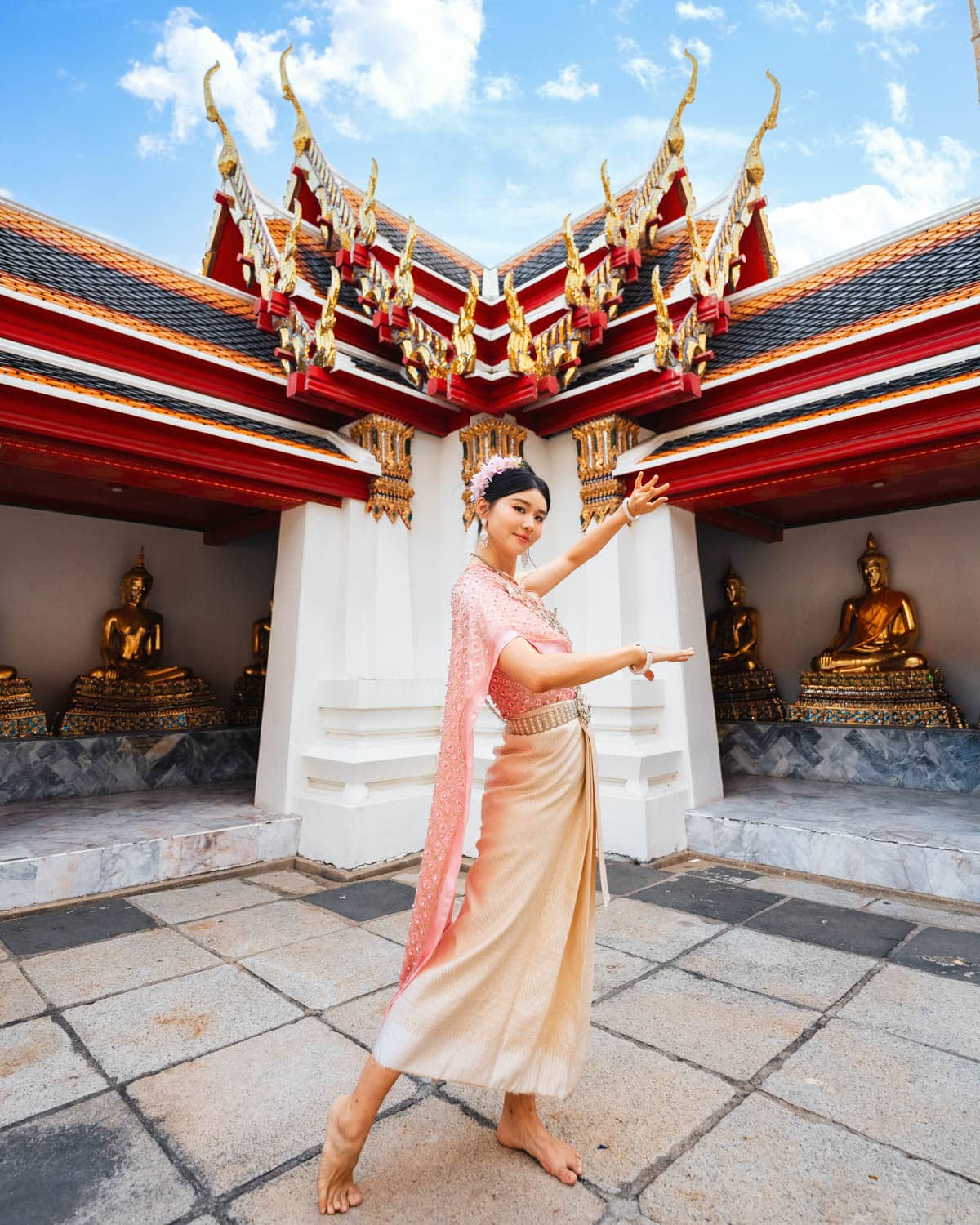Thai royal attire is a fascinating reflection of the nation’s deep-rooted culture, history, and artistry. These garments are not merely pieces of clothing but symbolic expressions of Thailand’s monarchy, identity, and connections with neighboring civilizations. By tracing the journey of Thai royal attire through the centuries, we uncover stories of tradition, innovation, and a continued reverence for the country’s regal heritage.
Roots in Early Kingdoms
The origins of Thai royal attire lie in the Sukhothai Kingdom, Thailand’s first significant era, and later the Ayutthaya Kingdom. These periods marked the beginning of a distinct style of royal clothing that combined influences from India, the Khmer Empire, and China. Trade routes brought luxurious textiles such as silk, which became central to traditional Thai clothing.
The foundational garments of this era were the pha nung, a long piece of cloth wrapped elegantly around the lower body, and the sabais, long shoulder cloths draped across the chest or back. These pieces signified not only fashion but also status, modesty, and the wearer’s connection to Thai cultural values. Intricate weaving and embroidery were highly prized, with patterns often inspired by nature and mythology.
The Ayutthaya Era: A Heightened Focus on Grandeur
As the Ayutthaya Kingdom flourished, royal attire became more elaborate and ceremonial. The court adopted strict dress codes for various occasions, each requiring specific designs and accessories. Both men and women adorned themselves with opulent clothing crafted from gold- and silver-threaded fabrics, accentuating their prestige and divine status.
The chong kraben, a wrapped and tucked cloth worn by men, was paired with richly embroidered jackets for formal occasions. Women’s outfits featured more intricate patterns, often adorned with golden belts, brooches, and necklaces. These ensembles reflected the prosperity and sophistication of the Ayutthaya court, setting a precedent for royal clothing in future eras.
The Rattanakosin Era: Refinement and Formalization
The Rattanakosin era, beginning in 1782 with the establishment of Bangkok as the capital, marked a turning point in Thai royal attire. Under King Rama I and his successors, royal fashion underwent further refinement, with clear distinctions between court dress and clothing for everyday use.
Men’s attire became more structured, influenced by Western tailoring techniques brought by European visitors. The chong kraben remained a staple but was styled with fitted jackets and shirts, creating a blend of traditional and modern aesthetics.
For women, royal garments became even more lavish. Dresses were crafted from yok dok fabrics—silk woven with intricate floral motifs—and paired with ornate phaa biang shoulder cloths. The inclusion of accessories for Thai outfits, such as crowns, earrings, and golden bracelets, further enhanced their regal appearance.
The Influence of Queen Sirikit
In the 20th century, Thai royal attire experienced a significant revival under Queen Sirikit. As the consort of King Bhumibol Adulyadej, she played a pivotal role in promoting and preserving Thai cultural heritage. Recognizing the importance of traditional Thai outfits as a symbol of national pride, Queen Sirikit worked closely with artisans to recreate historical designs and adapt them for modern use.
Her efforts led to the creation of the Chut Thai Phra Ratchaniyom, a collection of eight official Thai clothing styles. These designs were tailored for various occasions, from royal ceremonies to evening galas, ensuring that the elegance of traditional Thai outfits remained relevant in contemporary society. Among the most iconic styles are the Chut Thai Chakkraphat, a majestic outfit inspired by ancient royal attire, and the Chut Thai Siwalai, a sophisticated ensemble for formal events.
Queen Sirikit’s influence extended beyond Thailand, as her elegant wardrobe showcased Thai craftsmanship to the world. Her efforts inspired a renewed appreciation for traditional Thai clothing and spurred the preservation of weaving and embroidery techniques passed down through generations.
Symbolism and Craftsmanship
Thai royal attire is not only celebrated for its aesthetic beauty but also for its symbolic meanings. Each piece of clothing is a carefully crafted representation of status, spirituality, and cultural identity. Colors play a significant role, with specific hues chosen for their auspicious qualities or association with certain days of the week. For example, yellow, representing Monday, is considered sacred as it is the day of the King’s birth.
The fabrics used in royal attire are often woven by hand, employing ancient techniques that require exceptional skill. Patterns may include depictions of mythical creatures, lotus flowers, or geometric shapes, each carrying its own symbolism. Gold and silver threads are commonly used to highlight the grandeur of the garments, while jewelry such as crowns, belts, and necklaces add a finishing touch of regality.
Thai Royal Attire in Modern Celebrations
Today, the legacy of Thai royal attire continues to thrive in modern cultural celebrations and special events. Traditional Thai outfits inspired by royal designs are often worn during festivals, weddings, and national ceremonies. These garments have become a way for people to connect with their heritage, express their pride, and honor the beauty of Thai culture.
The rental of traditional attire has also grown in popularity, allowing individuals to experience the elegance of royal-inspired clothing for themselves. Whether attending a formal event or participating in a photo session with Thai costumes, these garments offer a unique opportunity to immerse oneself in Thailand’s regal traditions.
Experience the Majesty of Thai Royal Attire
The history of Thai royal attire is a journey through time, revealing the artistry and cultural significance of these exquisite garments. At Siam Crown, we celebrate this legacy by offering a stunning collection of traditional Thai outfits for rent. From wedding Thai costumes to costumes for Thai festivals, our selection ensures that you can experience the elegance and grandeur of royal-inspired clothing.
Visit Siam Crown today to explore our range of authentic Thai clothing and accessories. Whether you’re preparing for a special event or simply wish to honor Thailand’s rich heritage, our collection will help you create unforgettable memories. Book your Thai costume today and take part in a timeless tradition that continues to inspire awe and admiration.



